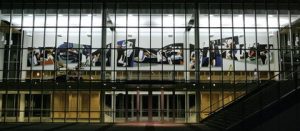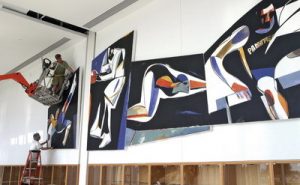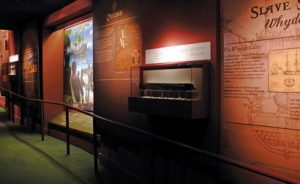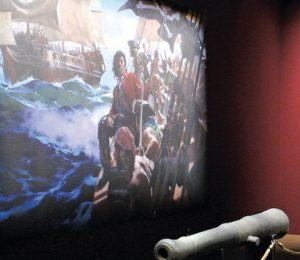It’s approximately as difficult for a mural to be understated as it would be for a silverback gorilla to traipse delicately through your living room. Whether rendered by hand or via an inkjet printer, environmental graphics juxtaposed against blank walls almost invariably attract attention.
From the murals unearthed in southern France’s Lascaux caves, which were some of the earliest forms of art, to Mexico’s muralista movement, which generated colossal works from such luminaries as Diego Rivera, David Siqueiros and José Orozco, to modern commercial and public-art applications, the mural remains a vital art form.
Amidst economic triage and uncertainty, it can be increasingly difficult to convince would-be clients wary of their balance sheets to invest in grand-format graphics. However, the timeless maxim, “it takes money to make money,” remains unflinchingly true. Whether as a complement to on-premise advertising, an off-premise wall graphic or a stately piece of public art, murals offer a plethora of possibilities.
UNI-fying Artwork
The University of Northern Iowa (UNI) fields one of the top football squads in the NCAA’s Football Championship subdivision – this past year, the Panthers reached the semifinal round. The school also supports 12 other intercollegiate sports, each of which have achieved a measure of success.
Gary Kelley, a painter, illustrator and muralist — and Cedar Falls, IA resident and proud UNI graduate. The university approached Richard Solomon, director of Art on a Grand Scale (NYC), which serves as a liaison between artists and clients who seek artistic and commercial murals, and Kelley, who subsequently submitted a successful bid for the 17 x 80-ft. mural.
Advertisement
“Iowa allocates a portion of a public construction project’s budget to art,” Kelley said. “It’s fortunate they recognize the value of environmental graphics as an asset that helps create a sense of place.”
The piece decorates a corridor between the university’s Uni-Dome, where the football team plays, and the McLeod Center, where the basketball team takes the hardwood. The corridor also serves as a “hall of fame” that celebrates current NFL quarterback Kurt Warner and others who’ve distinguished themselves in Panther purple and gold. Kelley wanted to create timeless artwork, so he created figures that represented the school’s sports, which he clad in school colors and surrounded with bold, complementary tones.
Once he’d received approval from a university-appointed committee, he confronted the project’s logistical hurdles. He initially considered painting them on the corridor’s exterior facing wall, but the construction timeline would’ve provided only one month to paint the mural. Also, he could only access the irregularly shaped artwork.
Instead, Kelley chose to create the mural with canvas tightly stretched over superstructure comprised of 2 x 4 boards that’s mounted to the wall with steel brackets. He produced the large-scale environmental graphic offsite and rented a commercial garage space to lay out the project. Because of the impeding I-beams and sizeable wall, Kelley cobbled together 13 abstract pieces that conformed to the support structure. He credited Peter Colver, the finish carpenter who devised the support structure, with playing a vital role in the project’s success.
Advertisement
Though most traditionally painted murals are rendered with oil-based paints, Kelley selected Sherwin-Williams Enduro latex paint to better weather light exposure. Approximately three-fourths of his mural work is digitally enlarged, but he chose to paint directly on canvas for this project because the building’s configuration allows very close inspection of the piece.
“I didn’t want visitors seeing the mural from such a close perspective and discovering it was a digital reproduction,” Kelley said.
Whydah Mural? Why Not?
Pirates have long held a prominent place in history and storytelling. The fantasy of sailing the open seas in search of treasure and glory resonates with kids of all ages – after all, a part of us wants the guy in the black hat to prevail – and the box-office success of the Pirates of the Caribbean series and other movies has preserved Blackbeard, Jack Sparrow and other characters affiliated with the Jolly Roger.
Pirate tales have entertained generations, but the National Geographic Society has strived to find authentic stories of their travels. Barry Clifford, an underwater explorer who’s searched for and investigated pirate ships for approximately 20 years, found the remains the Whydah, a pirate ship that crashed off the coast of Cape Cod during Colonial times, and unearthed a trove of maps, jewels and other artifacts.
Advertisement
The society contracted Arts and Exhibitions (Aurora, OH), which designs, produces and markets large museum exhibits, to create a traveling display that features Clifford’s found treasures. To create murals that depicted the heroic (and not-so-heroic) characters that sailed on the Whydah, Arts and Exhibitions hired Greg Manchess, a Portland, OR-based illustrator and muralist, to develop the artwork for the program, “Real Pirates: The Untold Story of the Whydah – from Slave Ship to Pirate Ship.”
He began his work with oil-on-linen paintings for the 10 murals, which range in size from 8 x 12 ft. to 12 x 16 ft. Manchess said the proximity from which the mural will be viewed influences his technique.
“For some exhibits, clients want an extremely realistic look,” he noted. “In other cases, they want an impressionistic or blurry look. Here, they wanted the viewer to see the brush stroke. Something involving pirates shouldn’t look too elegant.”
Crush Creative (Burbank, CA), which output the inkjet-printed graphics, began the process by photographing the painting and converting it into vector art. Using Onyx’s ProductionHouse RIP, the shop used a VUTEk 5300 for some Artex cotton fabric prints, and Durst Lambda prints on thick Broadway canvas cloth for others.
John Gibson, Crush Creative’s project manager, said proofing and the tight, two-week timeframe proved to be the most significant roadblocks.
“There was a lot more to this job than just the murals,” he said. “We printed more than 200 pieces that included banners, exhibit IDs and others. For exhibit pieces that will be viewed at such close range, there can’t be even slight imperfections. And, these prints will be traveling from museum to museum, so it was vital to create vibrant graphics that could withstand bright museum lights and frequent removals.”
Installers situated the prints by stretching them taut across plywood boxes and stapling them from behind onto stretcher bars that secured the prints.
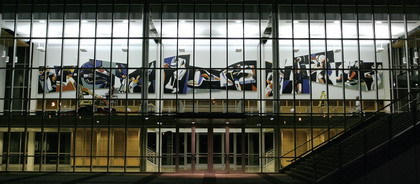

 News1 week ago
News1 week ago
 Real Deal1 week ago
Real Deal1 week ago
 Photo Gallery7 days ago
Photo Gallery7 days ago
 Ask Signs of the Times2 days ago
Ask Signs of the Times2 days ago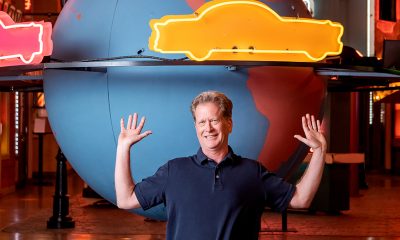
 Editor's Note1 week ago
Editor's Note1 week ago
 Tip Sheet1 week ago
Tip Sheet1 week ago
 News2 weeks ago
News2 weeks ago
 Product Buying + Technology2 weeks ago
Product Buying + Technology2 weeks ago
